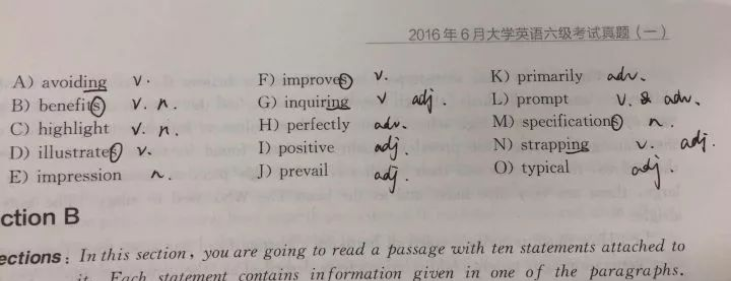职称英语考试(理工类):阅读理解(三)
|
One-room Schools One-room schools are part of the heritage of the United States, and the mention of them makes people feel a vague longing for “the way things were2” One-room schools are an endangered species, however. For more than a hundred years, one-room schools have been systematically shut down and their students away to centralized schools. As recently as 1930 there were 149,000 one-room schools in the United States. By 1970 there were 1,800. Today, of the nearly 800 remaining one-room schools, more than 350 are in Nebraska. The rest are scattered through a few other states that have on their road maps wide-open spaces between towns. Now that there are hardly any left, educators are beginning to think that maybe there is something yet to be learned from one-room schools, something that served the pioneers that might serve as well today. Progressive educators have come up with progressive-sounding names like “peer-group teaching” and “multi-age grouping” for educational procedures that occur naturally in the one-room school. In a one-room school the children teach each other because the teacher is busy part of the time teaching someone else. A fourth grader can work at a fifth-grade level in math and a third –grade level in English without the stigma associated with being left back or the pressures of being skipped ahead. A youngster with a learning disability can find his or her own level without being separated from the other pupils In larger urban and suburban schools today, this is called “mainstreaming”. A few hours in a small school that has only one classroom and it becomes clear why so many parents feel that one of the advantages of living in Nebraska is that their children have to go to a one-room school. 1. It is implied in the passage that many educators and parents today feel that one-room school 2. Why are one-room schools in danger of disappearing? 3. What is mentioned as a major characteristic of the one-room school system in the second paragraph? 4.Which of the following can best describe the author’s attitude toward one-room schools? 5.It can be inferred from the last sentence that parents living in Nebraska A) don’t like centralized schools. Passage 2
Computer programmer David Jones earns £35,000 a year designing new computer games, yet he cannot find a bank prepared to let him have a cheque card. Instead, he has been told to wait another two years, until he is 18. The 16-year-old works for a small firm in Liverpool, where the problem of most young people of his age is finding a job. David’s firm releases two new games for the home computer market each month. But David’s biggest headache is what to do with his money. Despite his salary, earned by inventing new programs, with bonus payments and profit-sharing4, he cannot drive a car, buy a house, or obtain credit cards. He lives with his parents in Liverpool. His company has to pay £150 a month in taxi fares to get him the five miles to work and back every day because David cannot drive. David got his job with the Liverpool-based company four months ago, a year after leaving school and working for a time in a computer shop.“I got the job because the people who run the firm knew I had already written some programs," he said. “I suppose £35,000 sounds a lot but I hope it will come to more than this year.” He sends some of his money on his money on records and clothes, and gives his mother £20 a week. But most of his spare time is spent working. “Unfortunately, computing was not part of our studies at school,” he said.” But I had been studying it in books and magazines for four years in my spare time. I knew what I wanted to do and never considered staying on at school. Most people in this business are fairly young, anyway.” David added:“I would like to earn a million and I suppose early retirement is a possibility. You never know when the market might disappear. 1. Why is David different from other young people of his age? A) Because he earns an extremely high salary. B) Because he is not unemployed. C) Because he does not go out much. D) Because he lives at home with his parents. 2. David’s greatest problem is A) finding a bank that will treat him as an adult. B) Inventing computer games. C) Spending his salary. D) Learning to drive. 3. He was employed by the company because A) he had worked in a computer shop. B) He had written some computer programs. C) He had worked very hard. D) He had learned to use computers at school. 4. He left school because A) he did not enjoy school. B) He wanted to work with computers and staying at school did not help him. C) He was afraid of getting too old to start computing. D) He wanted to earn a lot of money. 5. Why does David think he might retire early? A) Because you have to be young to write computer programs. B) Because he wants to stop working when his is a millionaire. C) Because he thinks computer games might not always sell so well. D) Because he thinks his firm might go bankrupt. Passage 3 Driven to distraction Joe Coyne slides into the driver’s seat, stars up the car and heads to town. The empty stretch of interstate gives way to urban congestion, and Coyne hits the brake as a pedestrian suddenly crosses the street in front of him. But even if he hadn’t stopped in time, the woman would have been safe. She isn’t real. Neither is the town. And Coyne isn’t really driving. Coyne is demonstrating a computerized driving simulator that is helping researchers at Old Dominion University (ODU) examine how in-vehicle guidance systems affect the person behind the wheel. The researchers want to know if such systems, which give audible or written directions, are too distracting --- or whether any distractions are offset by the benefits drivers get from having help finding their way in unfamiliar locations. “We’re looking at the performance and mental workload of drivers,” said Caryl Baldwin, the assistant psychology professor leading the research , which involves measuring drives’ reaction time and brain activity as they respond to auditory and visual cues. The researchers just completed a study of the mental workload involved in driving through different kinds of environments and heavy vs. light traffic. Preliminary results show that as people “get into more challenging driving situations, they don’t have any extra mental energy to respond to something else in the environment,” Baldwin said. But the tradeoffs could be worth it, she said. The next step is to test different ways of giving drivers navigational information and how those methods change the drivers’ mental workload. “Is it best if they see a picture … that shows their position, a map kind of display?” Baldwin said. “Is it best if they hear it?” Navigational systems now on the market give point-by-point directions that follow a prescribed route. “They ‘re very unforgiving,” Baldwin said. “If you miss a turn, they can almost seem to get angry.” That style of directions also can be frustrating for people who prefer more general instructions . But such broad directions can confuse drivers who prefer route directions, Baldwin said. Perhaps manufacturers should allow drivers to choose the style of directions they want, or modify systems to present some information in a way that makes sense for people who prefer the survey style , she said. Interestingly, other research has shown that about 60 percent of men prefer the survey style, while 60 percent women prefer the route style, Baldwin said. This explains the classic little thing of why men don’t like to stop and ask for directions and women do, Baldwin added. 1. Which statement is true of the description in the first two paragraphs? A. If Coyne had stopped the car in time, he wouldn’t have hit the woman. B. The woman would have been knocked over, if Coyne had followed the traffic regulations. C. Coyne is not really driving so it is impossible for him to have hit the woman. D. If the woman had not crossed the street suddenly, Coyne would not have hit her. 2. What do researchers want to find out, according to the third and fourth paragraphs? A. Whether or not audible or written directions are distracting. B. How long it will take the driver to respond to auditory and visual stimuli. C. How the driver perform under certain mental workload. D. All of the above. 3. What are the preliminary results given in the fifth paragraph? A. Drivers are afraid of getting into challenging driving situations. B. In challenging driving situations, drivers still have extra energy to handle other things. C. In challenging driving situations, drivers do not have any additional mental energy to deal with something else. D. Drivers’ mental load remains unchanged under different situations. 4. The sixth paragraph mainly state that the researchers A. is designing a visual navigational information system. B. is designing an audio navigational information system. C. is designing an audio-visual navigational information system. D. want to determine the best ways of giving navigational information system. 5. What kind of directions do men and women prefer? A. Women prefer more general directions and men prefer route directions. B. Men prefer more general directions and women prefer route directions. C. Both men and women prefer general directions. D. Both men and women prefer route directions. |








